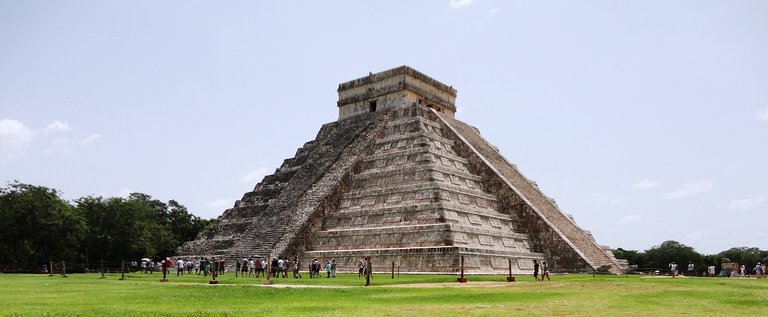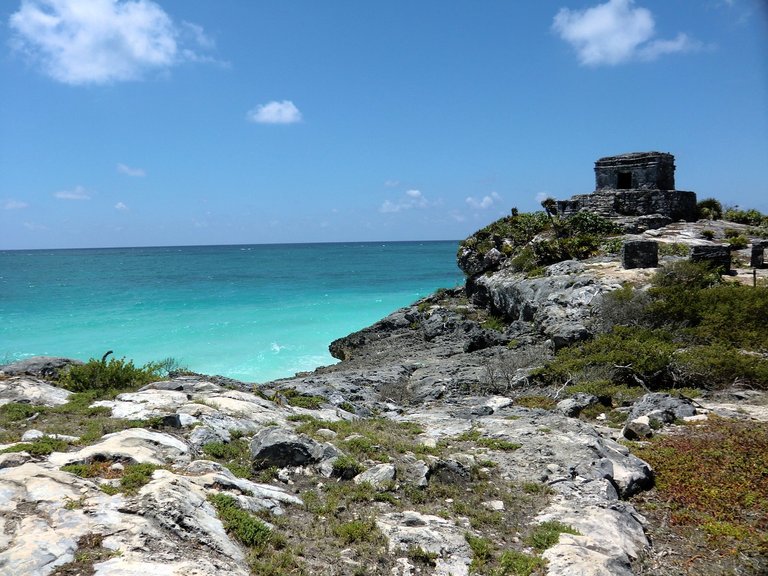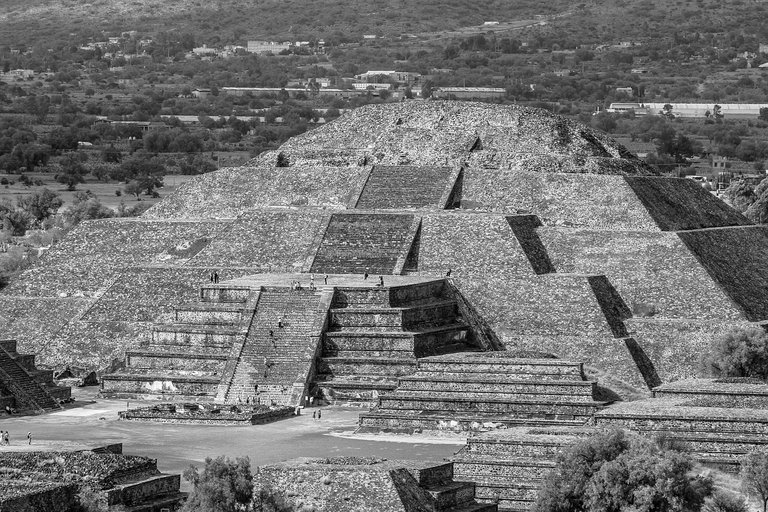Ruins In Mexico—A Personal Favorite
It's Been A While
My wife and I have managed during out 30-plus years of marriage to do a bit of traveling. She quite a bit more than me, if we count the times she's gone to visit family on her own or with our sons.
A lot of the traveling we've done has happened within the country of Mexico, since that's where she originates, and as in many countries throughout the world, there's a lot to see and do there.
Of all the places I've been in Mexico, up at the top of the list of my favorites are the ruins you can visit in the Yucatan/Quintana Roo areas.

Unfortunately, I don't have pictures of my own readily accessible. The first time I went, it was with a friend before smartphones and built in cameras. He brought his film camera and took a lot of pictures. I'm not even sure now where my prints of that trip are. I'll have to dig around for them.
However, the image above should suffice as a teaser for one of the places I recommend—Chichen Itza, near the small town of Piste, Mexico. It is one of the most preserved and sprawling areas I've been to. El Castillo is the pyramid there, and it's 365 steps represent every day of the year. It's quite amazing what the Mayans and others were able to achieve, and the scientific and medicinal knowledge that they had.

I consider this to be the ultimate in beachfront property. The Mayan weren't necessarily all bloodthirsty. How could anyone live with a view like this and want to go on a rampage? Too tranquil to entertain such thoughts. They may have needed to defend their homes from others wanting the view, though.
This is in Tulum, south of Cancun and Playa Del Carmen along the Mayan Riviera. After touring the ruins, there's a small beach with white sand and very warm water that you can go down to. It's an amazing experience. You'll probably find iguanas throughout the grounds (growing in size the farther you go in), and you might find a cluster of butterflies in the foliage or low lying trees (not pictured) depending on when you go.

This picture is another site called Uxmal. It's near Merida, Yucatan, the largest city on that eastern side of Mexico. Uxmal is an example of where different conquering people's have built on top of existing construction, giving things their own spin. I believe it was seven or so different influences in the building above. It very much reminded me of a castle you might find out on an English moor. And of all of the pyramids I've climbed up, it had the narrowest steps.
I've been to Uxmal only once. The other two I've visited twice, once with my friend, the other with my wife. I'd like to go back to see all again someday, along with some others I haven't been to.
My wife would like to get all of our family down there, grandkids and all. Not specifically to either of these three places, but definitely to visit with her side of the family. No one there speaks a lot of English, and the daughters-in law are not Spanish speaking, so there would be a need for a lot of translating.
There are ruins closer to where her family lives, outside of the greater Mexico City metropolitan area, called Teotihuacan. There, it's scale that astounds you. Nothing there is small or dainty. The Temple of the Sun is one of the largest pyramids in the world.

On a clear day, which isn't every day, thanks to inversions and general haziness, you can see for miles from the top. It takes a while to get there. The steps are huge, but fortunately they're divvied up into levels that you can catch your breath on before you start the next section.
However, it was done, no doubt on the backs of slave labor, it is an incredible feat of planning and engineering. Not just the temple, but the entire grounds. The Aztecs, who discovered the place after the people who built it were long gone, thought giants were responsible for its existence, because of the grand size and scope of everything.
If I remember right, I've been to Teotihuacan three times. I know it's at least twice. It's an amazing experience, and a place where you will need to spend the entire day to see it all. Best to get in as early as possible to avoid the crowds and the afternoon sun. Keep hydrated, and bring your own water, because it will probably cost more if you buy it in the store prior to going on the grounds.
For a time, I thought about starting a tour business. We'd have a small hotel or large bed and breakfast down in the Yucatan, and provide guided tours to the sites. I also wanted to sell Mayan hammocks. Needless to say, neither business ever materialized, though I did end up with some pretty cool hammocks for a while.
My wife hopes to get down to see her family again next year. That, I think will happen. Getting everyone down there, not as easy, but who knows. We probably have a year to plan for it. I don't know if we'll be able to go see any of these ruins, but I'd like to. Maybe when the grandkids are a little older.
All images—Pixabay
Amazing places. Even the ruins look awesome.
They are pretty amazing, especially when you try to imagine what they may have looked like in their heyday. From what I've read or been told, wood could have been used along with brightly colored fabrics to cover places where stone acted as more of a foundation or half wall. The photos of the pyramids or temples may have had some of that, too, but they were mostly stone structures in and of themselves.
In Chichen Itza, there's a domed structure called the observatory because a narrow circular stairway leads to a square hole in the dome that was presumably used to observe the stars. If I remember right, the part underneath the dome could be moved horizontally and vertically.
One can't being to imagine how they engineer such things in days gone by.
Hello @glenalbrethsen, thank you for sharing this creative work! We just stopped by to say that you've been upvoted by the @creativecrypto magazine. The Creative Crypto is all about art on the blockchain and learning from creatives like you. Looking forward to crossing paths again soon. Steem on!
Howdy sir Glen! wow that is amazing! Incredible structures. Can you go inside any of them or did they have anything inside them?
Some you can go inside, others it's not allowed due to structural integrity or wanting to preserve what's left. I've never been inside any of them, and not all of them have anything.
I think as far as the large pyramids or temples go, the main point was what or who might be at the top. The Temples of the Sun and Moon are so large, though, they could have supported any number of wooden structures on each level. So, the stone structure could have been like floors with wooden stalls covered with fabrics of some kind to create stores or booths to sell from. I'm afraid I'm not up on what all may have been on the outside.